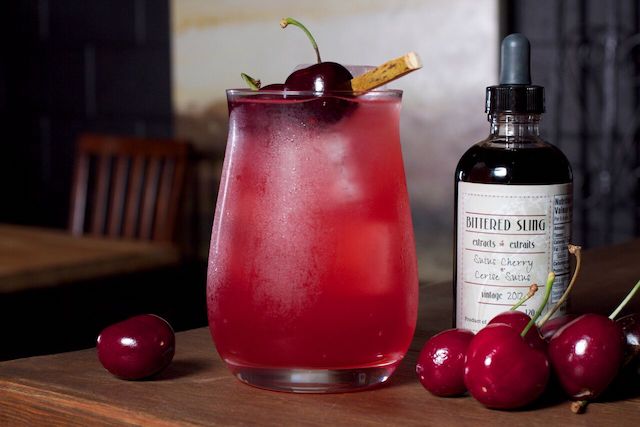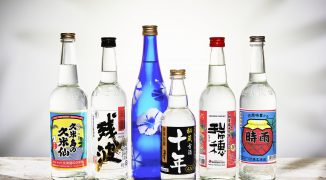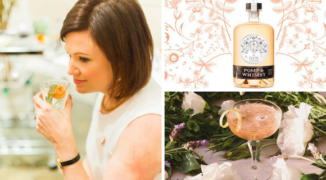Once a staple in apothecaries and pharmacies, bitters have long been a fixture behind the bar — after all, the original “cock-tail” meant a mix of spirits, water, sugar and bitters. But with a booming market for small-batch bitters and a seemingly endless well of flavors from which to choose, we’re far from the days when one bottle of classic aromatic bitters would do the trick. Nowadays, bitters range in flavor from Aztec chocolate to crabapple and cardamom. At the forefront of this bitters revolution: Lauren Mote, bartender extraordinaire and co-creator of Vancouver-based Bittered Sling. Lauren launched the small-batch bitters brand in 2012 alongside Chef Jonathan Chovancek, and has since developed a range of intricate, complex and innovative bitters spanning more than a dozen flavors.
Most bartenders understand the basics of bitters: what’s in them, what they do to a drink, perhaps even how to make them in-house. But there’s so much more to bitters than simply reaching for a bottle and adding a few dashes to a drink. So, we asked Lauren to join us for a Shake Up and give us a crash course. Here are just a few of the things we learned (for more, check out the full video recap below):
What are bitters? They aren’t tinctures, for starters.
When we’re talking about bitters, we’re talking about extracts — and they’re not the same as tinctures. “Tinctures are technically one singular ingredient that’s extracted to create one flavor,” says Lauren. “Bitters are not a singular ingredient; they are a combination of ingredients that come together to add depth and complexity and to soften out the harsh edges of ingredients.” Or, in her words, to add a certain je ne sais quoi that makes a cocktail extraordinary.
The best way to understand what bitters do to a cocktail: make a Manhattan.
There are many ways to explain what exactly happens when you add bitters to a drink. But according to Lauren, perhaps the most helpful (and delicious) way to understand the nuance added by bitters is to make a cocktail and see for yourself. “We always like to say, make two variations on the Manhattan,” says Lauren. “The first one is using two parts whiskey, one part sweet vermouth, and a couple dashes of aromatic bitters. Make that same cocktail again, without the bitters, and what are the differences? It’s not necessarily that you notice the bitters there; it’s that you notice when they’re missing.” As Lauren says, that’s the most important thing to understand about bitters: the myriad variations in different flavors and styles of making bitters will yield countless results in a cocktail. And the best way to understand the variations and styles of bitters (and use them accordingly) is by experiencing them firsthand.
It isn’t a matter of tossing a fistful of barks and botanicals into a jar of Everclear.
Learning the effects that alcohol can have on ingredients (and the effects those ingredients can then have on each other) is crucial to mastering the nuance of bitters-making. “Alcohol is to the beverage world what deep fryers are to the cooking world: it produces a cooking effect when you add ingredients to it,” Lauren explains. The higher the content of water in the ingredients, and the higher the alcohol percentage, the faster and stronger the extraction will be — and, over time, the more ‘cooked’ your end result will be. “So if you were to make mint bitters, and you took a giant bush of mint and dumped 40% alcohol on top of it, it’s not going to give you fresh mint flavor that’s been gradually extracted; it’s going to give you cooked, brown mint flavor that’s not going to be appetizing.”
Every single ingredient is completely different, and it takes a serious amount of research for every single ingredient that’s going into a bottle of bitters — not to mention how those ingredients react with each other. Figuring that out, Lauren says, takes time, care, research, and attention. “You have to understand how these ingredients come together, how they taste together, how long you let it sit for, alcohol levels, all those things. That’s why making bitters is so complex.”
There’s a hierarchy of ingredients.
Lauren explains that at Bittered Sling, they see the components of bitters as a triangle. “At the top, we have the fewest ingredients, which is all of your bitter ingredients: things like cherry bark, dandelion, gentian, cinchona, angelica root, anything that’s going to add that cloying bitterness which will translate in oak-aged spirits,” she says. The next level down are the sweet barks, such as cinnamon, licorice root, and cassia — barks that aren’t bitter enough to take the entire blend of ingredients into a very bitter state, but elongate the bitterness and help to achieve balance. The level below that, which consists of even more ingredients, will be spices like allspice, cardamom, vanilla, teas. “Anything where there are subtle, beautiful flavors, but they’re not going to adjust the balance of bitterness in the bitters,” says Lauren.
Finally, the last level — and the one which requires the greatest volume of ingredients — are the fresh botanicals, such as rosemary, thyme, or fresh grapefruit peel. From there, it’s an art of making sure all the levels are working together in harmony. “If you try a bitters that doesn’t taste good to you, it’s because it’s not balanced,” says Lauren. “And you’d never add an imbalanced ingredient with your cocktail. It’s up to us to make sure we’re always providing a product that’s balanced already, in the bottle.”
Sometimes, two is better than one.
Each bottle of bitters is complex on its own, but who’s to say that you can’t use more than one? For a version of mole bitters, Lauren likes to pair one dash of Bittered Sling’s Malagasy chocolate bitters with one dash of their Moondog bitters, or combine one dash of Palermo and one dash of Condesa from the Tales of the Cocktail pack. “If you like your mole to be a little more on the citrus-y side, you could do one dash of chocolate, one dash of Moondog, and one dash of Orange Juniper or Lem-Marrakesh, which is our roasted Moroccan lemon,” Lauren says. The possibilities are endless.
During maceration, some ingredients are lone wolves, while others like to party together.
As Lauren explained, each ingredient has a unique reaction to maceration. Figuring that out is half the battle; the other half may very well be determining which play well together when combined in the process. “We like the relationship that orange has when it’s macerating with the juniper, rather than orange by itself, and juniper by itself, and blending those tinctures together,” Lauren says. Whether you’re talking potable (a.k.a. liqueurs and amari) or non-potable bitters, each manufacturer has its own preferred method of combining these flavors, whether it’s by isolating ingredients and blending the end products together, or letting some (or all) ingredients hang out in maceration. Fernet Branca, she says, has a wide range of techniques they use to put their ingredients together, whereas Jagermeister uses more of a ‘teabag effect,’ in which all their ingredients are macerated together before water is continuosly poured over the botanical mix. “There isn’t one right way to make bitters; it’s all about the end product,” she says — which all depends on the water content of the ingredients in the blend, the ABV of the alcohol you’re using to macerate, and the ambient temperature of the place where you’re macerating your bitters.
A pack of bitters means endless opportunities for creativity, especially when it comes to pairing.
A few suggestions for pairing, via Lauren:
-
- In general, aromatic bitters go well with oak-aged spirits
- Citrus-based bitters love white spirits and fresh ingredients like mint, basil and cilantro
- Bittered Sling’s Plum and Root Beer Bitters works well as a tiki bitters in Fogcutters, Painkillers, and even a piña colada
- Kensington, meanwhile, can replace full-on aromatic bitters and, according to Lauren, can be used in just about anything.
- When making a Sazerac, which are classically made with Peychaud’s, Bittered Sling Suius Cherry makes a fine stand-in
- Rich Malagasy Chocolate Bitters play well with Cognac
- Celery Bitters pair exceptionally well with sherry, sake, bourbon, and vermouth, and they do great things to a Rob Roy or Champs Elysees
And when it comes to the Travel Pack, they made it easy: just go off of geography. “The bitters are meant to pair with the terroir of products made in the region,” Lauren says. Thus, Condesa — inspired by Mexico City and made with indigenous Mexican spices and chiles — is an ideal match for tequila, mezcal and sotol.
Bartenders and doctors have a lot in common.
Original pharmacists served their elixirs and bitters in cocottes, otherwise known as an egg cup —which, incidentally, look a whole lot like modern-day jiggers. Even the footrail of a bar is an idea borrowed from old-timey pharmacies, Lauren says. “You can see how modern-day bartenders have come from the people who administered medicine and things to make people feel better in pharmacies,” she says. “After all, that’s what we do as bartenders every single day. We tell stories, we’re administering some kind of compound to give you instant gratification, it will last a little longer the more you drink. So that’s sort of where we came from over the last 200 years.”
Check out Lauren’s talk in full below, and don’t miss the next live Shakeup on March 2nd, featuring Warren Bobrow on cannabis cocktails. RSVP here.





